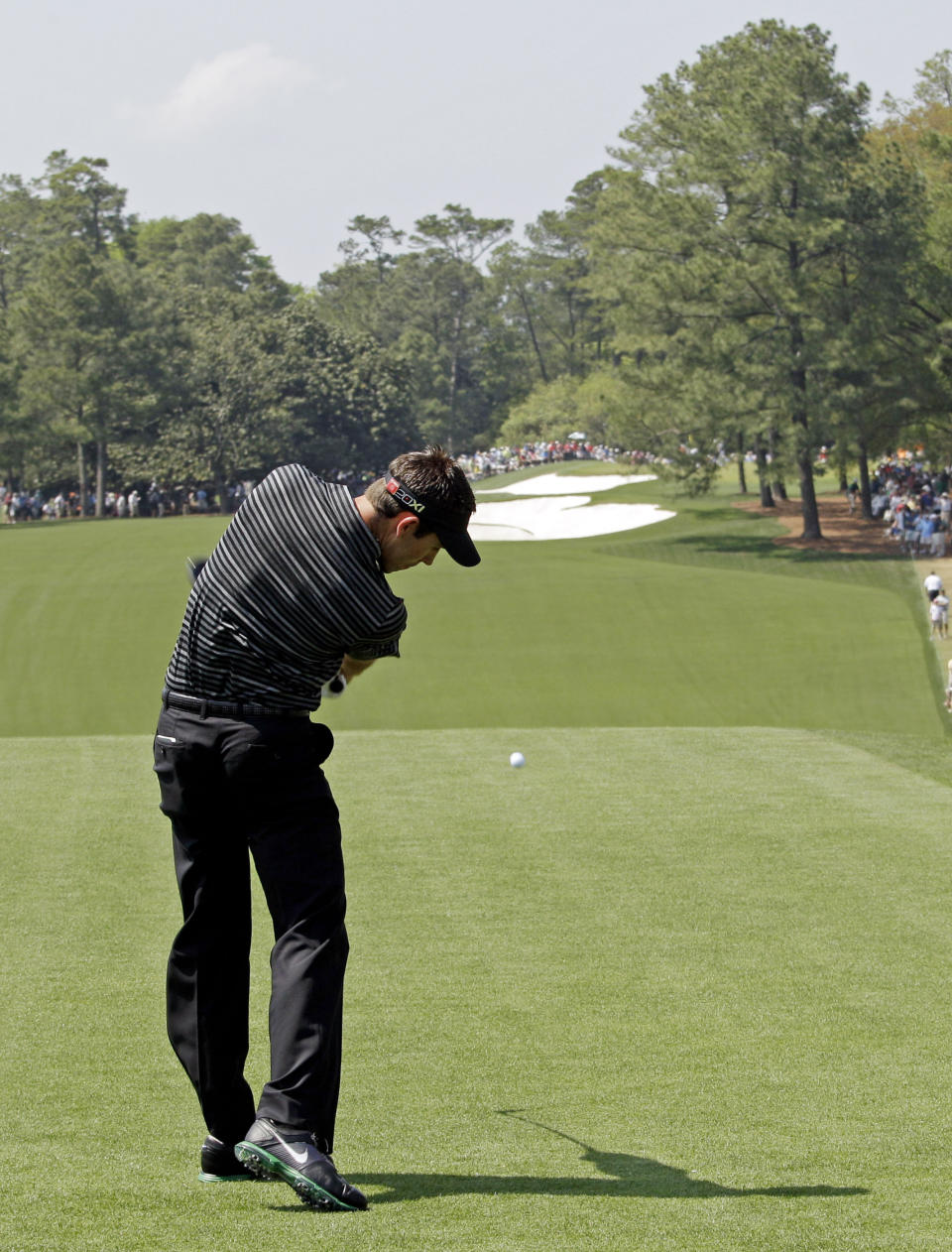MASTERS '22: 'Tea Olive' hole can be smelly start to Masters
AUGUSTA, Ga. (AP) — Alister MacKenzie offered some advice for his design of what has served as the opening hole at Augusta National since the second playing of the Masters.
No telling what he might have said to Charl Schwartzel.
The par-4 first, known as “Tea Olive” for the fragrant shrubs planted along the hole, measures 445 yards with a steep slope leading to the landing area and a gaping bunker to the right. MacKenzie wrote in 1932 that the drive should be long and straight and skirt the Georgia pines on the right for a favorable approach.
“It is difficult to obtain par figures from any other position,” he said.
Schwartzel took care of the first part in the final round of 2011, but from the middle of the fairway, he pushed it well to the right, an atrocious position to obtain par.
And then he delivered perhaps the most remarkable shot in 85 editions of the Masters. To aim at the hole would likely catch a ridge and go to the bottom of the green. Too soft and it rolls back to his feet. Slightly too firm and it runs off the other side of the green.
“I don't know if you remember, but when it gets a lot of foot traffic, they put down this ... it looks like sand, but it's tiny pebbles,” Schwartzel said. “In normal circumstances, I probably would have opened a lob wedge and hit a lot spinner. In those circumstances, on these pebbles, I had to run it.
He chose a 6-iron and bumped it high on a ridge and watched it drop for birdie. That was just the start, of course. Schwartzel holed from the fairway for eagle on No. 3 and became the first Masters champion to close with four straight birdies.
And it all started on No. 1.
“So many things can go wrong,” he said. “It was one of those perfect shots, I suppose.”
If anything goes wrong, it's usually off the tee. Olin Browne and Scott Simpson made double bogey in the same round in 1998. The trees have become more dense over the years, leaving little room for error to play the first shot of the Masters.
If there is a miss, would left or right be better?
“They both suck,” Dustin Johnson said with a laugh. “With a 3-wood, you've got a wider fairway and most times you can't even reach the bunker. But that left side creeps up quick.”
That was where Tiger Woods was headed when he played the Masters for the first time as a pro. The hype already was building. Woods already was locked in his own little world, blocking out an enormous crowd that framed the hole, picturing exactly where he wanted to go.
“So what did I do? I hit a high drive way left and into the trees — the shot I feared,” he wrote in his memoir of the 1997 Masters. “I had no shot to the green from the trees, but managed to play my second into the bunker left of the green.”
Bogey. And there would be three more when he made the turn. And then he was 22-under par over his next 63 holes and won by 12 shots.
“From the right bunker, you can't see the surface of the green,” Xander Schauffele said. "A lot of guys will hit 3-wood because the left side sneaks in quick, and you're in the left pine straw and trees, you're punching out and making 5.
“If you can sack up and hit a really good drive, then the hole becomes a little easier.”
It can be done, of course. Scott Verplank found himself in the bunker in 1987 and he holed his next one for one of only five eagles made on No. 1 in Masters history.
Once in play, the hole doesn't get any easier, with severe slopes from the back right to the front left of the green.
“The front left pin, you land it short and think, ‘That will bounce up.’ And it doesn't," 2007 champion Zach Johnson said. “Sometimes you think it should land 12 to 15 (yards) on and you get a bounce and it trickles over when it's firm. And then it get extremely difficult.”
Tyrrell Hatton, playing in his sixth Masters, laughs at the thought of the contours.
“One of those wonderful things about Augusta,” he said. "The Sunday pin in a bowl is the most appealing. The back right pin is one I don't normally enjoy.”
Even the easy putts can be scary. As majestic as it was to see Schwartzel pitch in with 6-iron for birdie, it was pure golf tragedy to see Ernie Els take six putts from about 2 feet to start his Masters in 2016.
“It’s hard to putt when you’ve got snakes in your head,” he said that day.
He made a 9, the highest score on Tea Olive in Augusta National history, and there was nothing fragrant about that.
___
More AP golf: https://apnews.com/hub/golf and https://twitter.com/AP_Sports


